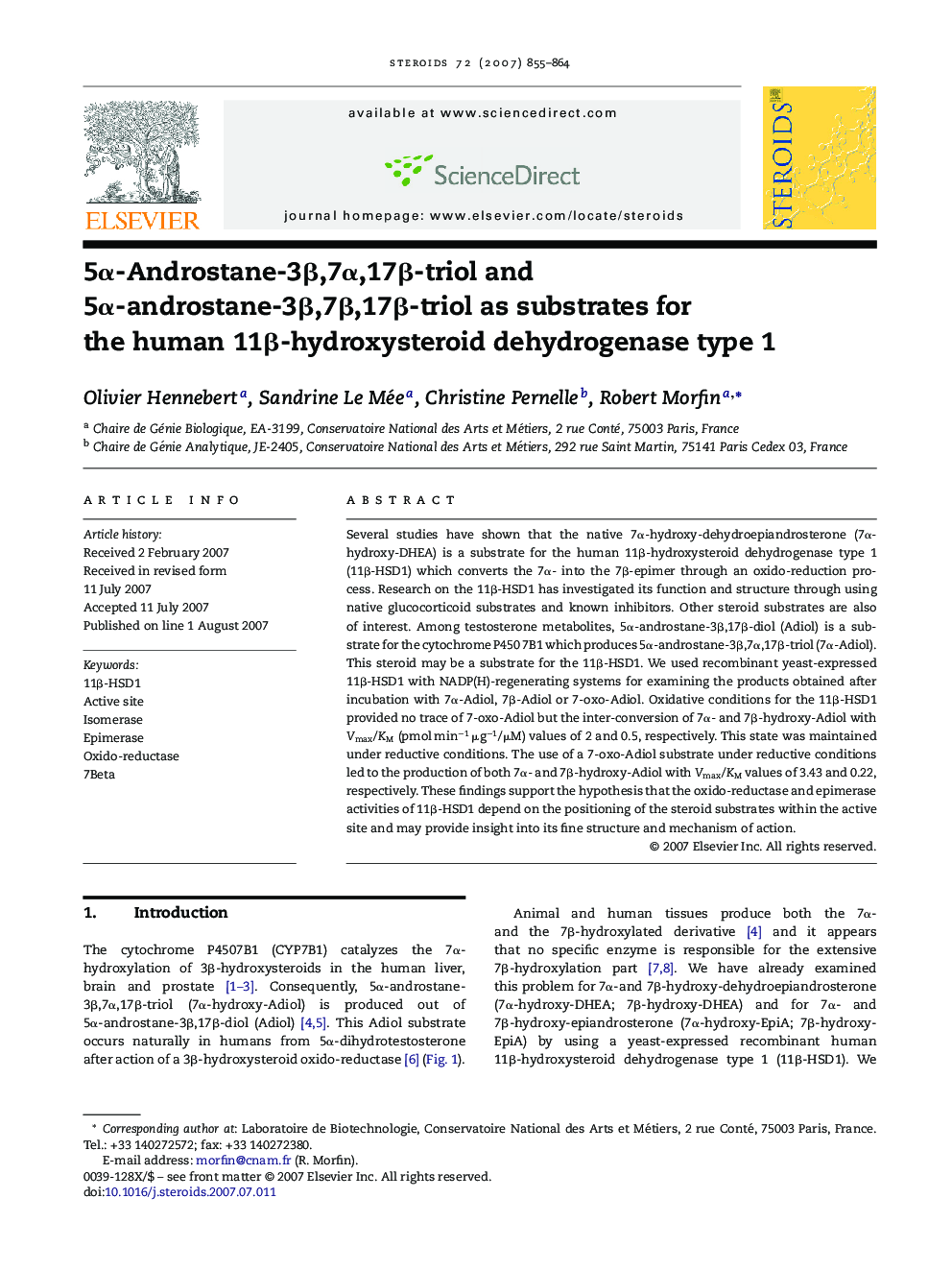| Article ID | Journal | Published Year | Pages | File Type |
|---|---|---|---|---|
| 2029065 | Steroids | 2007 | 10 Pages |
Several studies have shown that the native 7α-hydroxy-dehydroepiandrosterone (7α-hydroxy-DHEA) is a substrate for the human 11β-hydroxysteroid dehydrogenase type 1 (11β-HSD1) which converts the 7α- into the 7β-epimer through an oxido-reduction process. Research on the 11β-HSD1 has investigated its function and structure through using native glucocorticoid substrates and known inhibitors. Other steroid substrates are also of interest. Among testosterone metabolites, 5α-androstane-3β,17β-diol (Adiol) is a substrate for the cytochrome P450 7B1 which produces 5α-androstane-3β,7α,17β-triol (7α-Adiol). This steroid may be a substrate for the 11β-HSD1. We used recombinant yeast-expressed 11β-HSD1 with NADP(H)-regenerating systems for examining the products obtained after incubation with 7α-Adiol, 7β-Adiol or 7-oxo-Adiol. Oxidative conditions for the 11β-HSD1 provided no trace of 7-oxo-Adiol but the inter-conversion of 7α- and 7β-hydroxy-Adiol with Vmax/KM (pmol min−1 μg−1/μM) values of 2 and 0.5, respectively. This state was maintained under reductive conditions. The use of a 7-oxo-Adiol substrate under reductive conditions led to the production of both 7α- and 7β-hydroxy-Adiol with Vmax/KM values of 3.43 and 0.22, respectively. These findings support the hypothesis that the oxido-reductase and epimerase activities of 11β-HSD1 depend on the positioning of the steroid substrates within the active site and may provide insight into its fine structure and mechanism of action.
